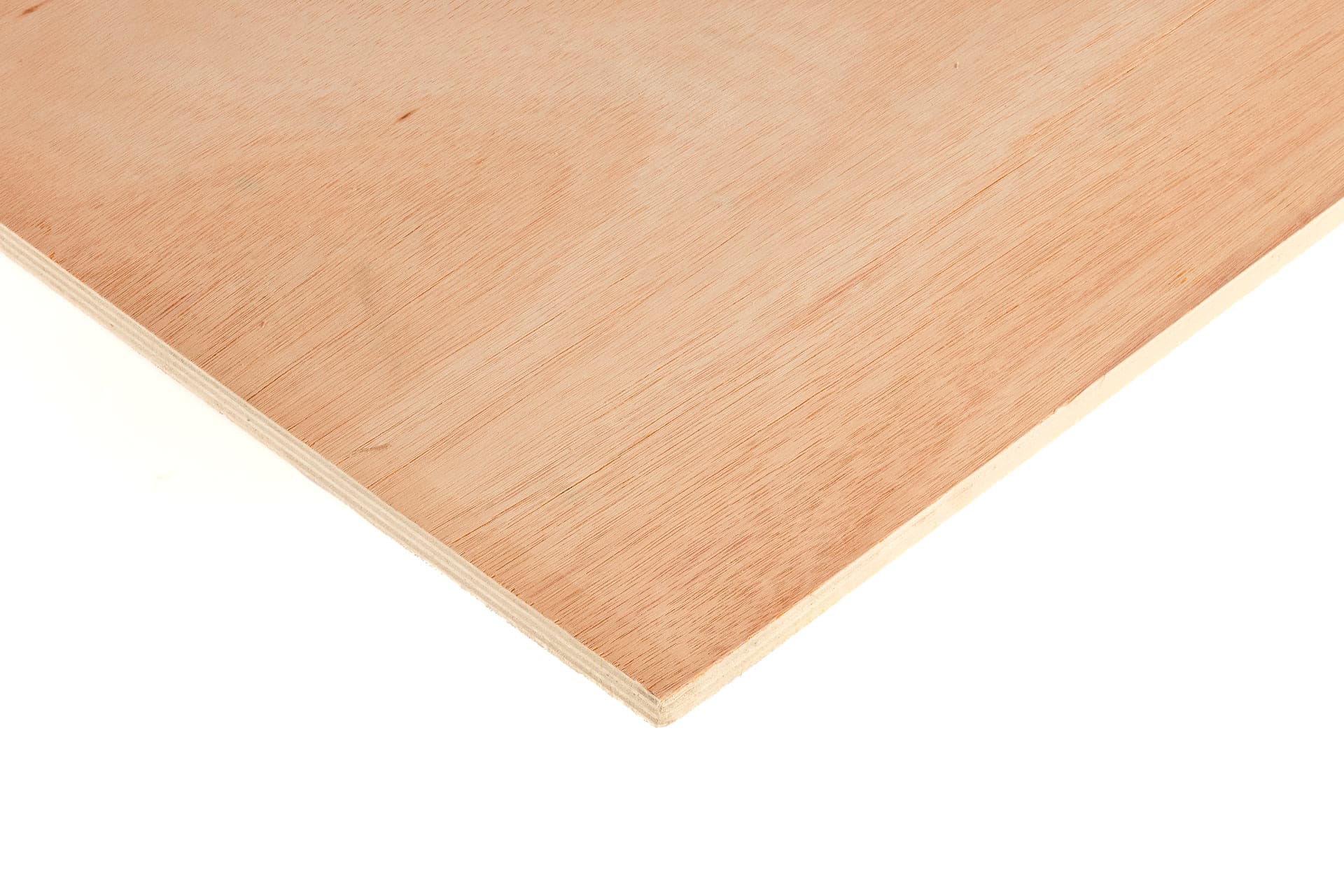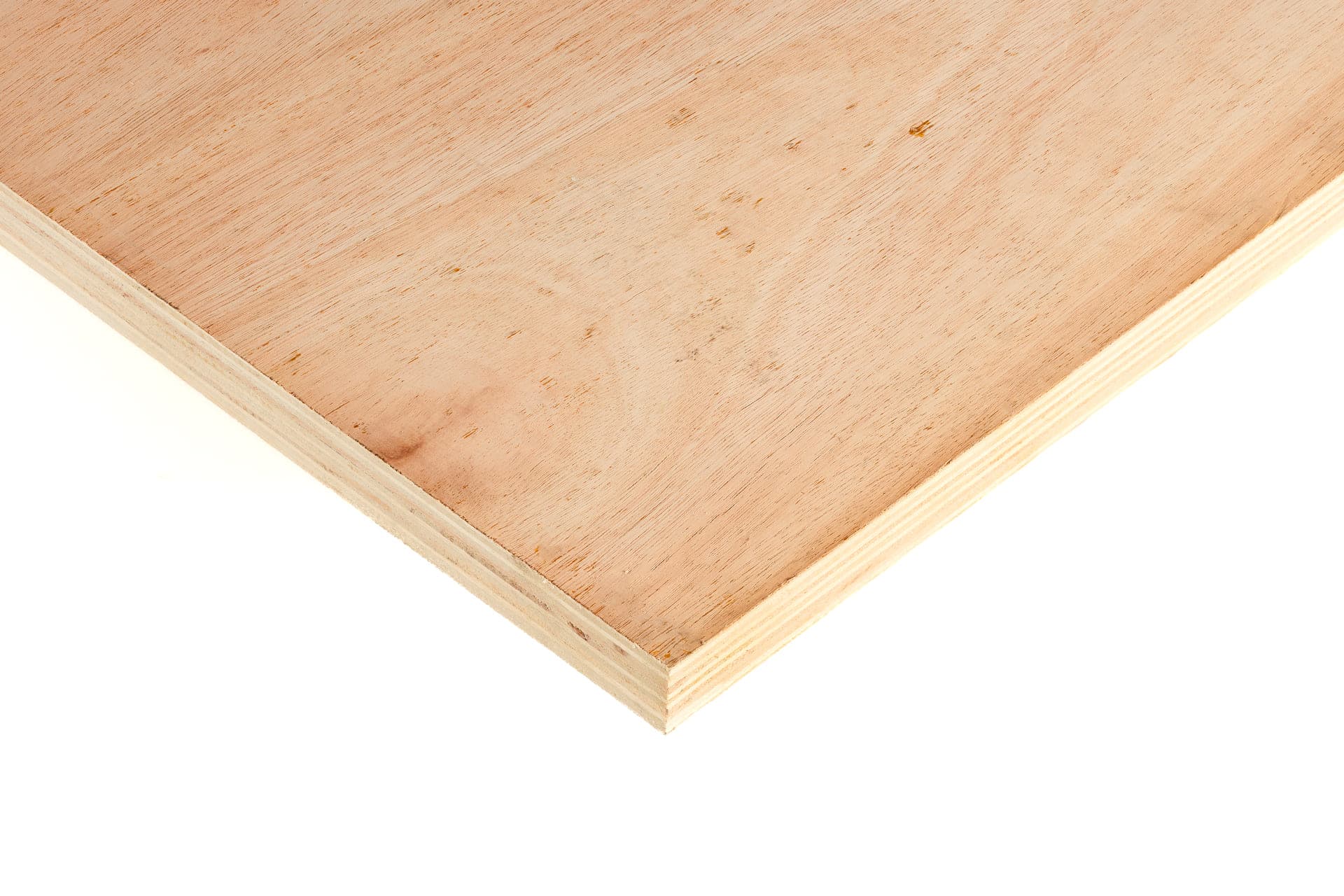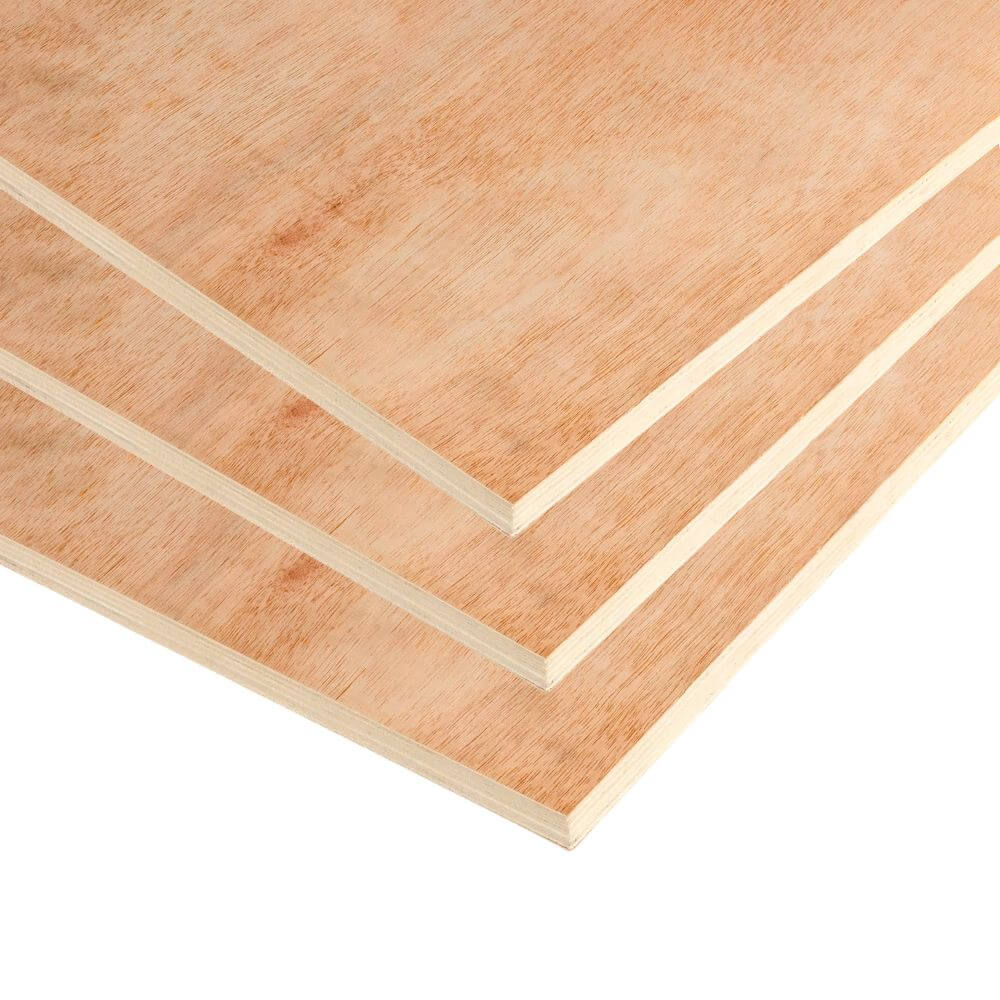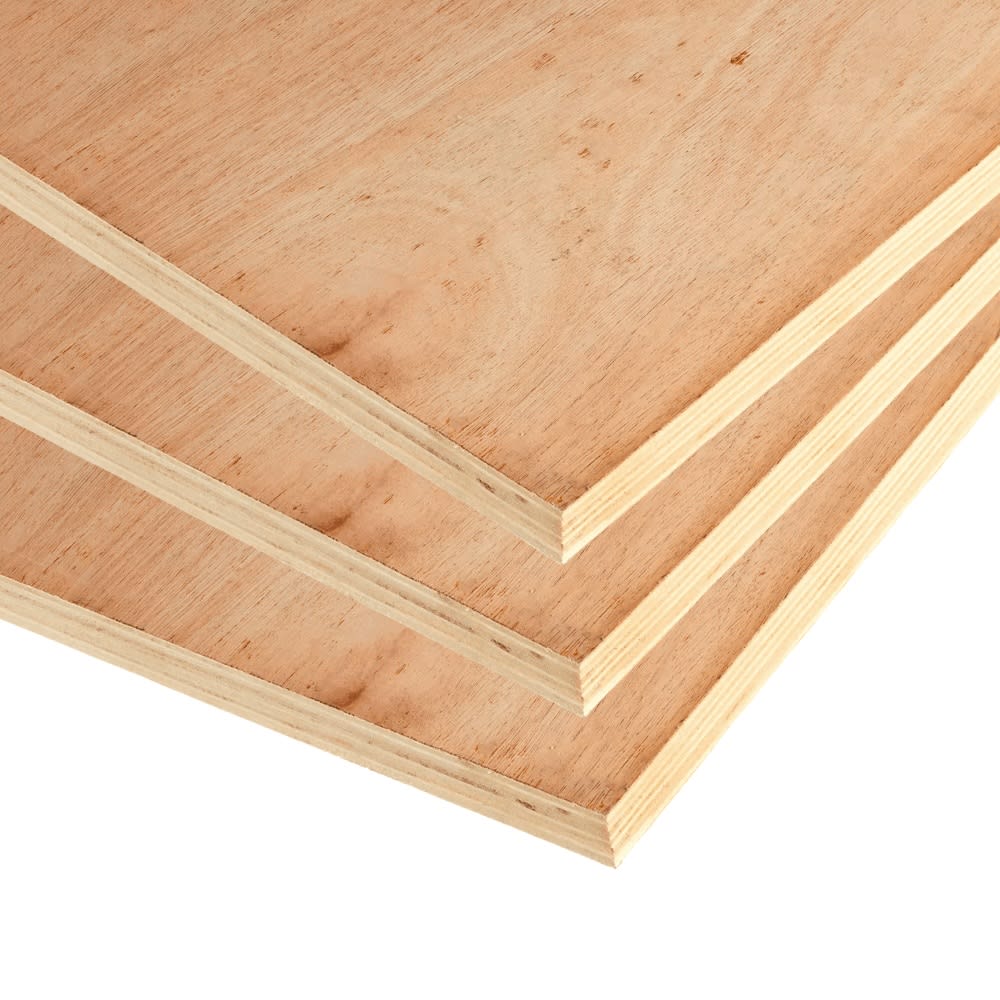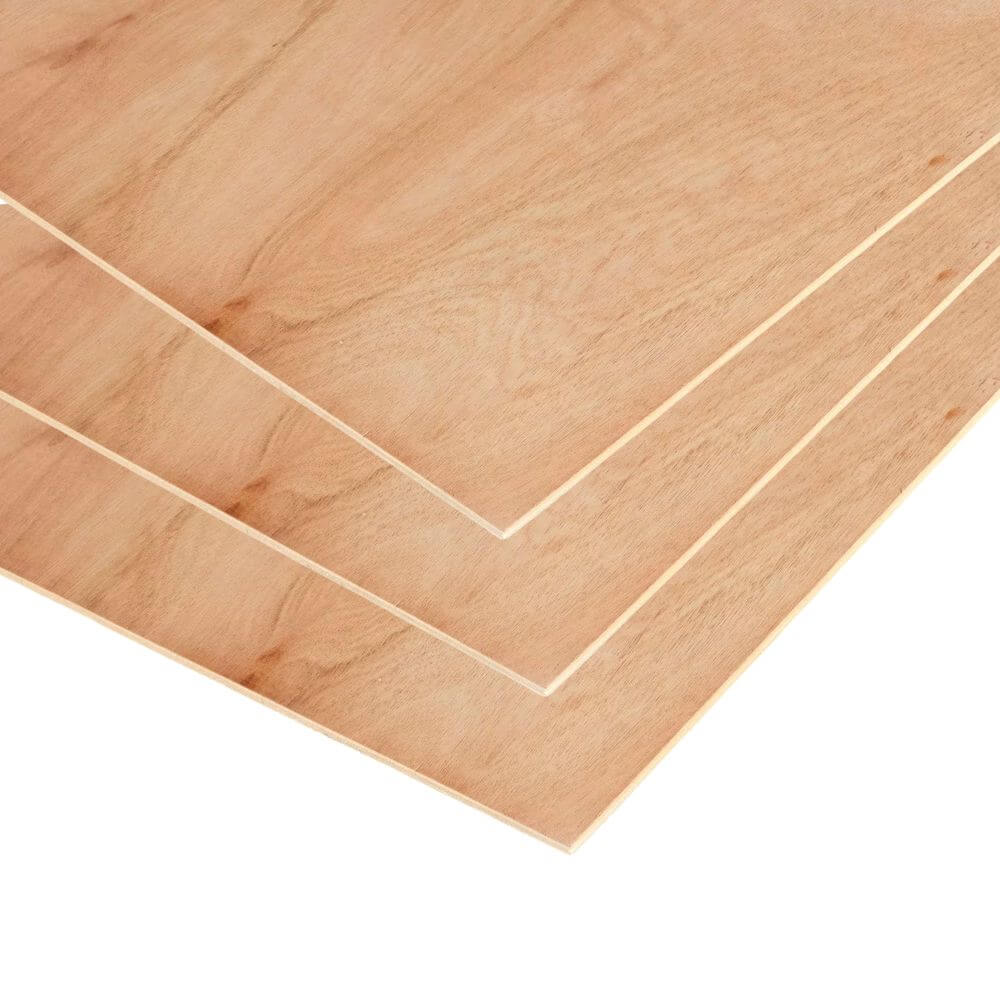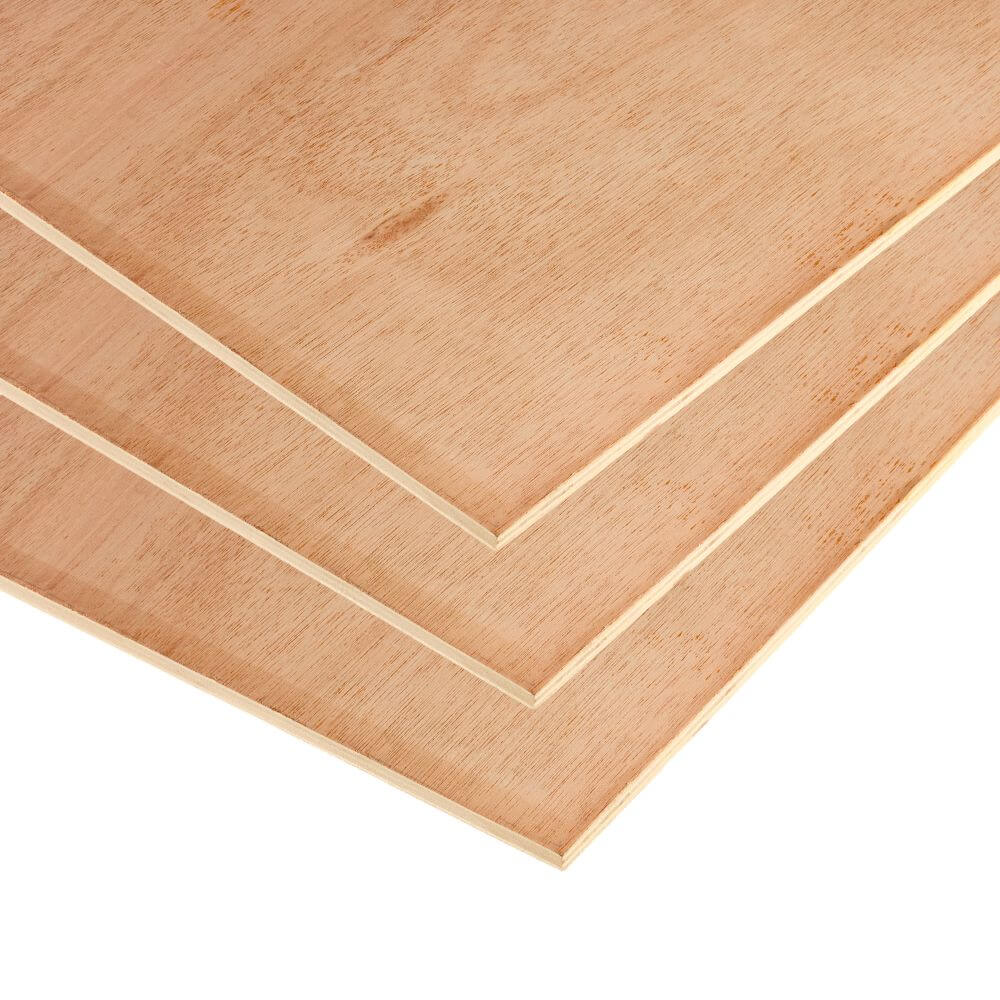Hardwood Plywood
(13 Products)Hardwood Plywood is a plywood type characterised by a hardwood veneer face and back. This cross-layered timber veneered panel provides consistent strength in interior and exterior applications (such as external wall panels and claddings, provided edges are sealed). At its heart, hardwood faced plywood is a strong, cheap, and eco-friendly alternative to solid wood. Previously referred to as WBP plywood (Weather and Boil Proof), this terminology has now been superseded by EN13986 and EN636 classifications.
What Is Hardwood Faced Plywood?
Hardwood-faced structural plywood is a layered wood composite made up of thin wood veneers (sheets) glued together. Each layer's grain direction is perpendicular to the adjacent layer, which contributes to its strength.
The outermost layers, or "faces," are made of hardwood, giving the panel a smooth finish suitable for various applications. This plywood is designed for structural use, meaning it can bear significant loads in construction.
Due to its hardwood veneer, it also offers a more aesthetically pleasing appearance, making it suitable for visible surfaces in interior environments such as cabinetry, furniture making, and flooring.
The core of this plywood often consists of various lighter hardwoods, Poplar, or a combination, which ensures strength while maintaining a manageable weight.
The thickness of hardwood plywood can vary, but it is typically sold in 4'x8' sheets.
Where Is Hardwood Ply Used?
Most hardwood faced ply sheets are engineered using Formaldehyde-free glues meaning they are not water-resistant and are only suitable for interior applications.
Depending on the grade and treatment used, hardwood plywood can be applied externally in humid conditions as well as in interior applications.
When applying the sheets externally, ensure their longevity and moisture resistance by using the correct type of edge sealant.
We recommend using Hardwood Faced Structural Plywood in the following applications:
- Furniture
- Bath panelling
- Flooring
- Roofing
- Sheds
- Packing cases
- Storage boxes
- Trailer linings
- Interior vehicle building
- General joinery
Note that if you are using the sheets for furniture making, plywood absorbs more paint than other wood products.
Hardwood Plywood Sheet Key Features & Many Benefits
- Durable and hard-wearing - ideal for high-traffic areas
- Quality hardwood facings with lightweight softwood core
- Can be stained, treated or painted
- High tensile strength
- Moisture-resistant due to the type of adhesive involved in the binding process
- Less likely to warp than softwoods due to its laminated layer composition
All of the plywood we stock is responsibly sourced from well-managed forests and in line with UK timber regulations.
Frequently Asked Hardwood Plywood Questions
What Is The Difference Between Hardwood & Softwood?
Plywood is available as a hardwood and softwood product. Hardwood plywood sheets are typically used for products like furniture and cabinets, while Softwood plywood is generally utilised for construction and industrial purposes.
The trees hardwood are typically sourced from tend to be slower growing, resulting in denser wood.
What Are The Different Types of Plywood Grades?
Plywood is graded into 4 primary groups:
- Class 1 – Strictly internal
- Class 2 – Interior grade of humid conditions but must be sealed
- Class 3 – Exterior grade but must be sealed (outdoor use)
- BS10 88 – Marine Plywood
What Is Hardwood Plywood Cross Graining?
Hardwood plywood is an engineered wood assemblage comprising thin layers or "plies" of hardwood veneer which are heat bonded with an adhesive resin.
Hardwood plywood is made from a variety of different hardwoods, including maple, oak, and cherry. The wood grain is usually rotated every other layer to help prevent warping and cupping in a process called cross-graining.
Cross-graining is the practice of orienting the grain of each plywood layer at right angles to the one below it. This alternating criss-cross pattern is behind plywood's impeccable strength and rigidity.
There are a few key reasons why cross-graining is so integral to plywood's overall strength:
- It helps to distribute weight more evenly across the surface of the material. This is because each layer is supporting the one above it, rather than all the weight being concentrated in one area.
- Cross-graining makes plywood less likely to warp or deform over time. When all the grain is going in the same direction, it is easier for the plywood to bow or twist out of shape. But when the grain is alternating, it prevents warping, making it much more difficult for the plywood to deform.
- Cross-graining gives plywood added strength in both tension and compression. This means that it can withstand more force without breaking or sagging.
What Is WBP Hardwood Plywood?
The term "WBP Plywood" (which stands for "Weather and Boil Proof") refers to the type of glue that is used to bond the layers of wood veneer together.
This terminology has been superseded by the EN314 and EN636 classifications, which define the bonding quality of the adhesive and the standards to which the plywood will perform.
All of our general-use hardwood birch plywood sheet materials (made from birch veneers) meet level 2 under these classifications, which means that they are suitable for use in humid conditions, and can be used outside if treated with an appropriate preserver and sealer.


